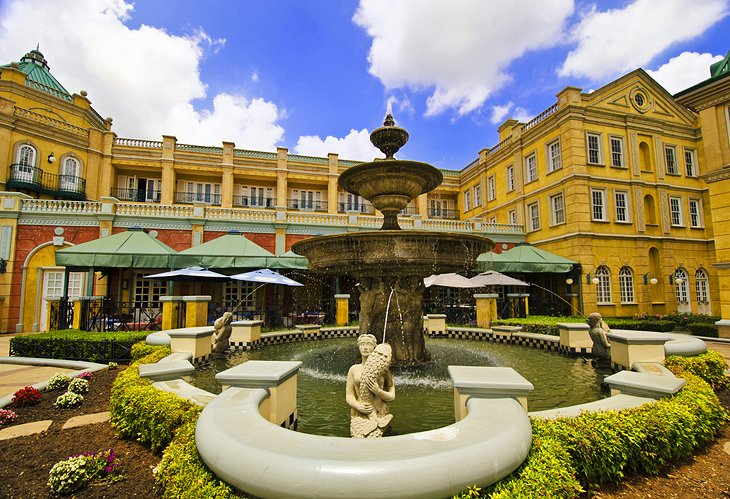Johannesburg North Attractions for Dummies
Johannesburg North Attractions for Dummies
Blog Article
5 Simple Techniques For Johannesburg North Attractions
Table of Contents4 Easy Facts About Johannesburg North Attractions ExplainedNot known Details About Johannesburg North Attractions Johannesburg North Attractions - The FactsThe 7-Minute Rule for Johannesburg North AttractionsSee This Report on Johannesburg North AttractionsFascination About Johannesburg North AttractionsRumored Buzz on Johannesburg North Attractions
You need to maintain protection in mind and tourists should remain alert at all times when in unfamiliar environments. Talk with the citizens when you remain in community to learn about the area you are remaining in. Johannesburg North attractions. When on the street (this doesn't relate to mall and various other secure environments) best basic suggestions is to attempt your finest to look like a neighborhood and to stay clear of showing any kind of wide range
About Johannesburg North Attractions
Professor Revil Mason O. J. (Thomson, 1946) discovered the Witwatersrand's pre-colonial background. His archaeological work took off the 'em pty land' misconception, according to which the region was lacking human habitation before the arrival of European settlers. In his magazines Prehistory of the Transvaal: A Document of Human Activity (1962) and Beginnings of Black People of Johannesburg and the Southern Western Central Transvaal AD 3501880 (1986 ), Teacher Mason demonstrated the level of social and economic growth in the area before Europeans established foot here.

Johannesburg North Attractions Can Be Fun For Anyone
He showed the government's permission, given after he had testified keep his explorations key. In 1874, small mining operations were begun in the Magaliesberg, where an Australian, Henry Lewis, had discovered gold deposits. In 1878, David Wardrop found gold in quartz veins at Zwartkop, north of Krugersdorp. In 1881, Stephanus Minnaar found gold on the ranch Kromdraai, near the Cradle of Humankind.
In March 1886, a protrusion (soon to be called the Key Reef) was found, fairly luckily, on Gerhardus Oosthuizen's farm Langlaagte. Some claim that the Lancastrian coal miner George Pedestrian found this coral reef. An additional travelling English miner, George Harrison (that had formerly operated in Australian mines) obtained a prospecting permit in respect of Langlaagte in Might 1886.
He made a decision to proceed in a pursuit for greener pastures, and disposed of his Langlaagte case for the handsome sum of 10. Alas: underneath lay the richest goldfield ever before found. The exploration of this rich auriferous coral reef provoked a gold thrill that signalled completion of agrarian tranquillity in the southerly Transvaal.
It would, within 6 years, become the biggest town in southerly Africa. Within a years, it would make the Z. A. R. till then an anarchical and insolvent little state the richest country in Africa. By the millenium, the Z. A. R. was to go beyond Russia, Australia and the USA of America to come to be the world's leading gold manufacturer, producing even more than a quarter of the world's gold.
4 Easy Facts About Johannesburg North Attractions Described
It was referred to as Ferreira's Camp, named after Colonel Ignatius Ferreira. He was a Boer traveler upon whom the British authorities had actually presented the standing of Companion of one of the most Identified Order of St Michael and St George (qualifying him to the post-nominal letters C. M. G.) in appreciation for his function in the war that had actually deposed the Pedi king Sekhukhune in 1879.
2 various other camps were developed: Meyer's Camp on the farm Doornfontein, and Paarl Camp. The latter was nicknamed Afrikander Camp; several people from the Cape Swarm cleared up there.

Johannesburg North Attractions - Truths
This name got money by word of mouth, such that the Your Domain Name State Assistant affirmed the name to the Mining Commissioner on 9 October 1886. Stands in the village were auctioned on 8 December 1886. While some stands were cost 10, others were torn down for just sixpence.
2 years later on, these erven were to change hands for as much as 750 each. The tented camps diminished as a dorp of corrugated iron buildings established and increased north of the mines situated along the Key Coral Reef Roadway. Locations such as Jeppe's Town (where working-class immigrants erected their homes) and Doornfontein (where the upscale new 'Randlords' started to create their opulent houses) were soon included in the ever-expanding map of the community.
Not known Facts About Johannesburg North Attractions
Besides the street names, there were no signs of Johannesburg being located in a Dutch-speaking country. Several years later on, C. W. Kearns O. J. (among the very first boys enrolled at St John's University in 1898) would certainly recall: 'A strange reality regarding Johannesburg was that, although it was in the [Boer Republic], nearly every sites person talked English and even the Federal government slaves dealt with one in English, unless they were initial attended to in the Taal (or Low Dutch)'.
Britain had a rate of interest in ensuring optimum problems for gold production click to read on the Witwatersrand, and that the gold was exported to London rather than Berlin a vital provided all the much more clamant by the Z. A. R.'s raising toenadering with Germany. Mine owners were on a crash course with President Kruger, whose plan of monopolistic giving ins (typically provided to his cronies) avoided mining business from acquiring supplies of materials (particularly dynamite) and work on their very own, less expensive terms
The Greatest Guide To Johannesburg North Attractions
In 1890, the Volksraad had actually limited the franchise business to white males that had actually lived in the Z. A. R. for fourteen years or longer, therefore disqualifying the majority of the immigrants (who happened to be the major factors to the fiscus). Anxiety for the vote was a mere pretext for advertising a various program; many uitlanders regarded themselves as momentary site visitors and had no purpose of staying in the Z.
Report this page